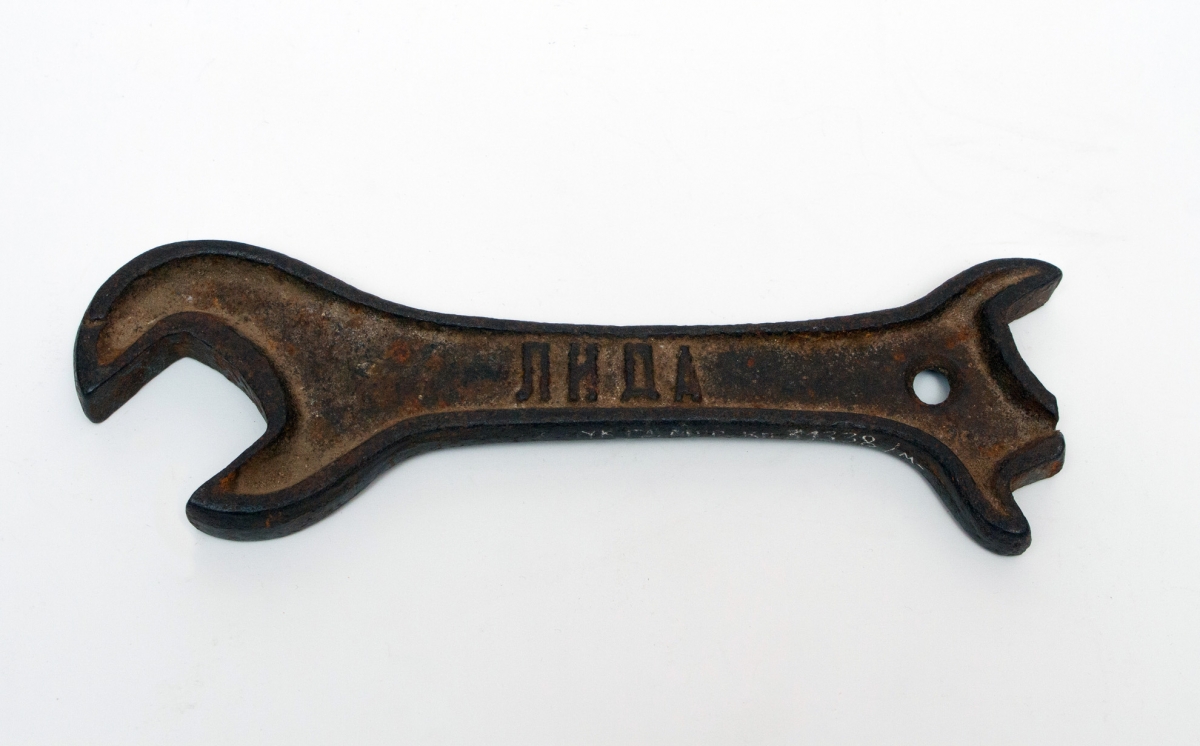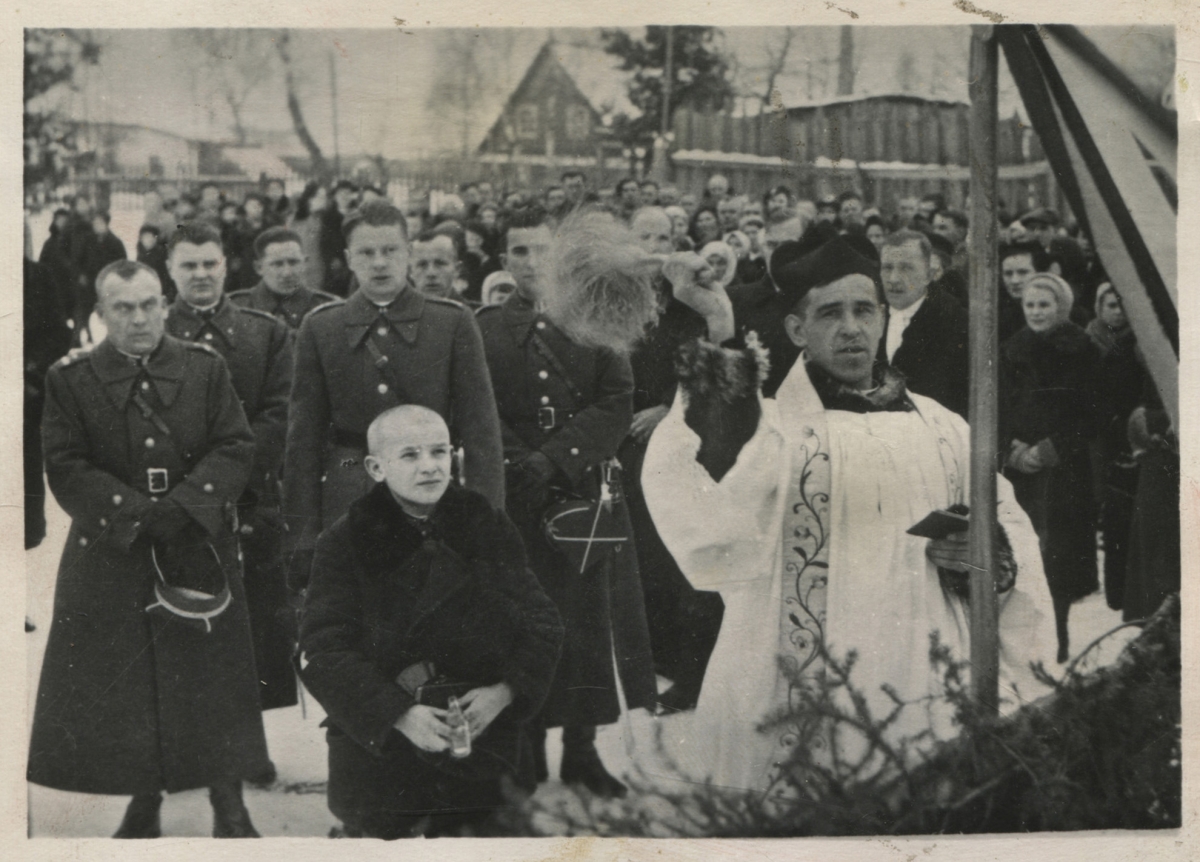
Industrialization

Preili Museum of History and Applied Arts (Latvia), Grodno State Museum of the History of Religion (Belarus) and Panevezys Local Lore Museum (Lithuania) joint virtual exhibition – “Industrialization”.
Preili Museum of History and Applied Arts
Industrialization - a complex process of history, based on the change of human management habits, replacing simple manual work with automated machines and various complex mechanisms. This process has transformed the modern world beyond recognition, and Preili as well. During the years of Soviet rule, the largest companies in the city were built - the Preili Linen Factory and the Cheese Factory, which has shaped and defined the face of the modern city. About the work of these companies in this month's virtual exhibition.
1. Preili Flax factory. (1952-1993.)
1. Photography. View of the territory of Preili Flax factory, from Preili TV tower. 1978.
2. Photography. One of the many production barns of Preili Flax factory. 1960s.
3. Photography. Flax production for processing in the territory of Preili Flax factory. 1960s.
In June of 1952, on the land plot near Daugavpils Street, opposite to the palace of Preiļi manor, where former Preiļi machine-tractor station was located, begun construction process of the first buildings for Preiļi Flax factory complex.
At that time, the factory was the largest flax processing complex in the entire Soviet Union, occupying almost 20 ha of total area.
In the November of 1955, the flax factory was able to start processing process, when the main factory building, flax production sheds, garages and workshops, workers' apartments were completed, while full workload capacity was achieved only in 1959, when remaining buildings of the facility – 8 flax processing workshops and laboratories ware also completed. Therefore employing ~ 30 workers.

2. Album of Preiļi flax factory worker, with flax fiber color and quality standards. 2nd half of 20th century. Flax production was collected not only from Preiļi, but also from collective farms in nearby districts - Līvāni, Malta, Viļāni, Dagda, Ilūkste and Daugavpils. The amount of gathered production was huge, therefore factory worked around the clock, and it was able to process ~15t of raw material of flax fiber. Firstly, imported fiber ware collected in sorting department area, where it was classified according to their quality. The Preiļi museum's collection store an album with flax fiber color and quality standards, used by former worker of the Preiļi flax factory - Viktors Dudarevs. The album contains 13 samples of flax fiber, which were practically used during sorting process of imported products.


3. Preiļi Cheese Factory. (1972. – now).
1. Photography. Production process in the manufactory of Preiļi Cheese factory. 1980s.
2. Photography. Overview of Preiļi Cheese Factory territory. 1970s.
Preiļi Cheese factory was built and put into operation at the end of 1972 as a branch of Daugavpils milking processing factory, covering the former working area of Rožupe, Aglona, Preiļi and Līvāni dairies. Thanks to stable and well-thought-out management, the factory has managed to develop continuously – heavily automated the work process, despite Soviet times bought high-quality equipment from Denmark, this pursue allowed to constantly increase work capacity and production volume. The end of Soviet era and difficulties that it brought with, was a big turning point – because factories production could be exported to wealthy Western markets, to countries like Denmark, Netherlands, Germany, Great Britain and other Baltic states (recently also to China). Since 2001, Preiļi Cheese Factory is the Latvia`s largest exporter of dairy products, exporting ~90% of its total production.

Hrodna State Museum of the History of Religion
1. Pincers, Metal, 17th century. Pincers are one of the oldest instruments used in carpentry, woodwork, locksmithery or blacksmithing. Most likely, they appeared a little later than the nails, about 5,000 years ago. Originally, they were used to remove the nails. Since nails were relatively expensive until recently, they were usually used to build houses for wealthy customers.
The present object was found in 1993, hidden in the wall of the church of the Discovery of the Holy Cross in Grodno. This church belonged to a monastery of the Bernardine order which was nearby. The complex of the monastery with the temple was built by the will of the Grand Duke of Lithuania Alexander for several centuries, from the end of the 15th century. In the middle of the 18th century, the buildings were rebuilt in the Baroque style. Presumably during the works, pincers were used and left in the wall.

2. Spanner. Metal. Lida. The beginning of the 20th century. The present spanner is a symbol of the new industrial era. It was released in Lida at the foundry of the brothers Yakov and Eber Shapiro between 1910 and 1920, as it is evidenced by the inscriptions on it. It was probably used to service machines that were manufactured in the same factory.
The factory was founded by the brothers' father, Judel Shapiro, in 1901. Initially, it produced cast iron products, but soon various machines and machinery that were used mainly in agriculture were produced. They were threshers, straw choppers, ploughs, harrows, fan mills and many other things. The production allowed to make castings according to the designs of the customers. The plant quickly became successful. Already in the first year of its work it released production in the amount of 26,000 rubles. The products of the Shapiro brothers were of high quality and were exhibited at the fairs in Vilno, where from 1901 to 1914 they received 14 gold and silver medals.
In 1939 the plant was nationalized. In 1994 the Lida plant of agricultural vehicles was transformed into JSC «Lidselmash».


3. Consecration of the plywood factory in Mosty (present-day Grodno Oblast). Photograph. Mosty. 1927. Mosty is a small town located 60 kilometers from Grodno and surrounded by several large forests. A special place in its history is the opening of the plywood factory of the brothers Ignacij and Václav Konopatsky, which took place in December 1927. The plant was built in a short period of time and was the best-equipped factory in Europe. When the factory was started, there were about 100 people working there. The factory initially produced about 20 cubic meters of plywood per day.
The production of the best grade birch plywood brought success to the enterprise. In the late 1920s, it was the basic material for the manufacture of aircraft fuselages, as well as elements of railway cars. The rapid development of technology required more and more of this material, so the Konopatsky brothers' factory supplied aircraft plywood to England, Germany, Belgium, India, Indochina, Malaysia, Argentina, Singapore and Ceylon Island. It was one of the world’s largest producers.
In 1939, with the entry of Western Belarus into the BSSR, the Konopatsky plant was nationalized. Since 1994 the enterprise is a joint-stock company «Mostovdrev».

Panevėžys Local Lore Museum
Industrial Revolution and industrialization reached Lithuania as part of Russian Empire. At the end of the 19th century, the first large industrial enterprises with modern technologies were built near the mills and other small enterprises already operating in Panevėžys: a vodka bottling plant, a spirits and yeast factory, and a brewery.
Rural areas have made less progress in industrialization compared to urban areas. During the First World War, the villagers took care of their basic food and necessities, by making them at home. The most marketable industrial goods, which were difficult to do without, were only a few: kerosene, matches, salt and iron.
During the interwar period, the largest industrial centers in Lithuania were Kaunas, Klaipėda, Šiauliai and Panevėžys. Companies in the food, woodworking, clothing and footwear industries dominated. Meat, flax processing and soap factories started operating in Panevėžys. There were operating mills, brewery, spirits and yeast factory, vodka bottling plant, sawmills, rope workshops and other smaller businesses. Construction of a sugar factory has begun. Innovations in companies depended on the financial capacity of their owners – not everyone could afford expensive equipment.
After the Second World War, socialistic industrialization has begun in Lithuania. In addition to traditional industries, the energy, chemical, machinery, metalworking, and building-material industries have flourished. In the northern part of Panevėžys, next to the railway, an industrial district has grown, and construction of large-panel apartment buildings has begun.
1. A modern woodworking machine at the end of the 19th century – a vertical band saw. Промышленность и техника. Энциклопедия промышленных знаний, т. 8, Санкт-Петербург, 1896, Photo by Gediminas Kartanas.

2. Public limited company „St. Montvilo įpėdiniai ir Ko“, had been working since 1891. Panevėžys, Photo by Vitoldas Kovalevskis (1928).

3. The labels of Candy and honey workshop "Rytas" and cotton-wool factory production. Panevėžys, 1920`s – 1930`s.

This publication was produced with the financial support of the European Union. Its contents are the sole responsibility of Preili County council, Panevėžys Local Lore Museum and Grodno State Museum of the History of Religion and do not necessarily reflect the views of the European Union.
About the project ENI-LLB-1-244 “Promotion of historical and culture cross border through museums innovations”
The project aims to build a cross border cooperation platform creating preconditions for ensuring the increasing interest of tourists and visitors about the cultural and historical heritage in the border area of Latvia, Lithuania and Belarus.
This project is funded by the European Union
Project budget: 367 864.64 EUR, EU funding 331 078.17 EUR
Project implementation period: 1st of June 2020 – 31st of May 2022
European Neighbourhood Instrument Cross-border Cooperation Programme Latvia-LithuaniaBelarus 2014-2020
https://eeas.europa.eu/delegations/belarus_be
Information prepared by:
Preili Museum of History and Applied Arts: https://preili.lv/nozares/kultura/muzeji/preilu-vestures-un-lietiskas-makslas-muzejs/
Grodno State Museum of the History of Religion: http://muzej.by/
Panevėžys Local Lore Museum: http://www.paneveziomuziejus.lt/
